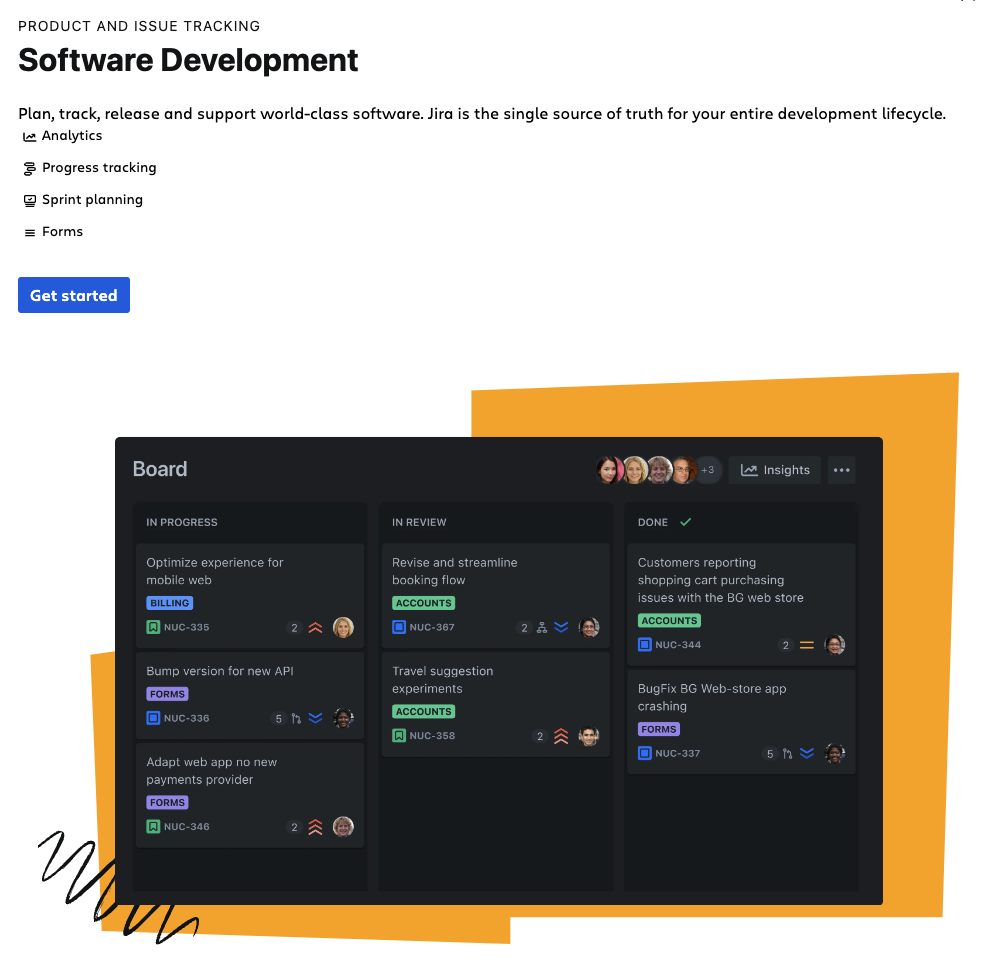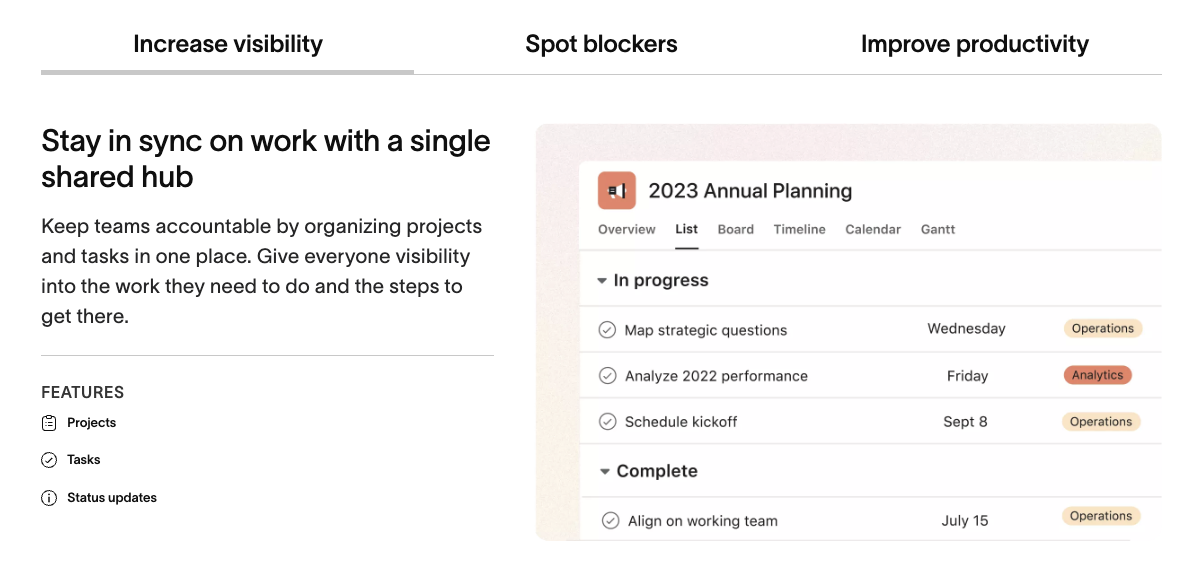Quick Guide on Agile Release Planning
Last updated on Mon Aug 26 2024
Software projects often fail for a number of reasons:
Overly ambitious goals
Inaccurate project records
Breakdown in communication
Lack of concentration on key objectives
Ineffective planning
Have you experienced any of these challenges in your projects? Have you tried adopting agile release planning?
Agile release planning helps teams plan, track, and execute product releases in a way that is efficient and responsive to change.
In this quick guide, we’ll walk you through what agile release planning is all about, why it’s beneficial, and the steps involved. Plus, we’ve selected a few tools that can streamline the process.
What is agile release planning?
Agile release planning is a project management method for planning incremental product releases, tracking progress, identifying risks, and releasing software on time.
Unlike traditional release planning, which may focus on long-term goals and fixed schedules, agile release planning is designed to accommodate changes and deliver value continuously.
This method involves breaking down work into manageable units such as sprints, product iterations, and staged releases.
Achieve specific goals with sprints
Sprints are time-boxed efforts, typically lasting one to two weeks. They are focused on delivering a specific set of features or functionalities, resulting in a potentially shippable product increment.
Teams work collaboratively to define and achieve clear goals with each sprint. Sprints not only enhance focus but also improve productivity and facilitate early and frequent delivery of value.
Deliver a functionality or a patch through product iterations
Sprints focus on short-term goals, while product iterations span multiple sprints and target broader product objectives. They allow for the development of new functionality or release of more complex features.
Iterations typically last two to four weeks and may bundle features, fixes, and performance enhancements. Organizing work into iterations aids in creating a development roadmap, managing dependencies, and tracking progress toward overarching product goals.
Gradually unveil with staged releases
Staged releases involve introducing new features or enhancements in phases. They help manage risk by allowing more time for testing and feedback before wider distribution.
Common staging strategies include A/B testing, beta testing, and phased rollouts.
What is the goal of agile release planning?
Simply put, the goal of agile release planning is to release the right features at the right time.
Instead of relying on guesswork, you make informed decisions by evaluating the value of each feature, understanding how they fit together, and assessing potential risks.
This approach allows you to create a strategic roadmap that prioritizes the right features—those that align with customer needs, drive business growth, and contribute to your overall product vision. Timing is key, ensuring that features are released when they hold the most value in the market.
By adopting agile release planning, you balance short-term goals with long-term product strategies. You can identify and resolve potential bottlenecks by considering dependencies between features for a smooth development and release process.
Risk assessment helps in mitigating challenges and prioritizing effectively. This way, your development efforts align with your organization’s strategic objectives.
What are the benefits of agile release planning?
1. Efficient delivery
Agile release planning prioritizes the most important tasks, speeding up product delivery without sacrificing quality.
2. Improved product quality
Early identification of dependencies and risks improves the final product's quality. Agile release planning fosters team collaboration, addressing issues before they escalate. As a result, all product components work seamlessly together.
3. Improved communication
With a shared roadmap, agile release planning fosters clear communication within your team and with stakeholders. This transparency prevents surprises and misunderstandings, strengthening relationships and keeping everyone on the same page.
For best practices on this, you can explore our guide to product launch communication plans.
4. Less scope creep
By adhering to a defined roadmap and pursuing essential features, agile release planning minimizes scope creep. Setting clear goals from the outset prevents distractions from new, unplanned ideas. To learn more about staying focused, read our post on roadmapping.
Key steps of agile release planning
Step 1 | Identify positive outcomes.
Before diving into the details, take a step back and envision what success looks like for this release. What are you trying to achieve? Are you targeting new customers, increasing revenue, or enhancing user experience?
Evaluate your product vision and roadmap to align outcomes with the release plan. Adapt the plan as required.
Step 2 | Prioritize your product backlog.
Your product backlog is a collection of ideas and tasks. Prioritize features based on their value, business impact, and development effort. This ensures that the most important tasks are addressed first.
Step 3 | Set a clear release goal.
Create a focused and achievable goal for the release. Utilize the SMART criteria to define this goal clearly.
An example is boosting user engagement by 20% with the introduction of a new personalized recommendation feature by the end of third quarter. Communicate this goal with your team to guarantee alignment and maintain motivation throughout the project.
Step 4 | Create a release plan.
Develop a detailed release plan with dates, feature lists, timetables, resources, and risk assessments. Break down the work into manageable tasks and assign responsibilities.
Identify potential risks and develop mitigation strategies. A well-structured release plan provides clarity and direction for the entire team.
Step 5 | Divide releases into sprints or iterations.
Segment the release into sprints or iterations, each delivering a valuable increment of the product. This approach allows for flexibility and adaptation, with features potentially changing based on evolving priorities or unforeseen challenges.
Step 6 | Communicate progress with users.
Transparency is key to building trust with your users. Share your release plans and achievements openly. Use changelogs to summarize changes and improvements.
Most importantly, actively seek user feedback to inform future releases. By involving your users in the process, you can create a product that truly meets their needs.
What tools can help with agile release planning?
Jira

Jira is a powerful tool specifically designed for agile teams. It offers a comprehensive suite of features for planning, tracking, and releasing software.
From creating detailed roadmaps to managing complex projects, Jira has you covered. Its flexibility and customization options make it a popular choice for teams of all sizes.
Asana

If you prefer a more straightforward approach, Asana might be your ideal tool. It is another agile-friendly tool, simpler than Jira and suitable for release planning.
Asana’s clean interface and intuitive design make it easy to get started and manage your release planning efficiently.
Trello

If you love a visual approach, Trello is a fantastic choice. Its Kanban-style boards allow you to easily organize and prioritize tasks.
Trello offers an easy-to-use platform that may be simpler than Jira or Asana, but it is complemented by third-party app power-ups.
What’s next?
Now that you understand agile release planning, it’s time to put it in practice. Start by reviewing your current project management processes and pinpoint where agile methods can improve efficiency. Select the appropriate tools to support your team, and involve them in the planning process right off the bat.
Remember, agile release planning is an ongoing journey. Continue to assess your strategy, gather feedback, and adjust as needed.
For your next project, use what you’ve learned to create a detailed release plan. You may also find our guide on feature request software helpful for managing user feedback effectively.